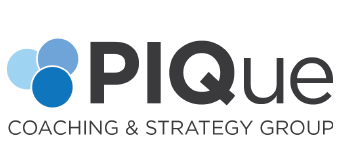Ron Garfield
PIQue Coaching and Strategy
Quiet Quitting
I was at dinner the other night with some friends. One of our friends, the president of a healthcare-related company, asked, “What is all this talk about Quiet Quitting?” What the hell is it?
I laughed. This is my current world. Having spent many years in the media space, “Quiet Quitting” is the latest trend. Partly driven by the media’s insatiable appetite for the next shiny new thing to drive clicks, this explosion in the interest in Quiet Quitting reflects how many Americans are feeling about their jobs after more than two years of pandemic disruptions.
“Quiet Quitting” is simply employee(s) working at the barest of minimums. They don’t go above and beyond what is needed. They no longer subscribe to the hustle culture mentality that work has to be their life. It is driven by a lack of meaning, purpose, and engagement in work.
“Quiet Quitting” is a lot sexier than the term commonly referred to as employee disengagement, which has been around for years, and it’s happening at an ever-increasing rate. Interestingly enough, the impact is far more significant on business than it is on the employees who are disengaged. Further to the point, employers struggle to pinpoint why employees are disengaged or turnover rates and employee churn are at all-time highs. However, the result has a tremendous impact on business.
Four forces contribute to employee disengagement.
- Job Fit – People in the correct positions. Both internally and externally.
- Manager Impact – Long overlooked and sometimes minimized. People leave managers, not companies. In extreme cases, many companies overlook poor-performing managers and blame poor performance on the employee.
- Team Dynamics – Does the team work toward a common goal, and do team members feel safe to share ideas or disagree with each other or higher-ups in the organization? And are they aligned on precisely what needs to be done and who is accountable?
- Culture – Increasingly important. Today, employees are looking for a sense of belonging, inclusiveness, and purpose when working. They are disengaged and leaving organizations that don’t meet these needs.
None of these are mutually exclusive, and any combination can cause an employee to disengage. And BTW, this happens at every level of an organization, from the senior leadership team to customer support and beyond.
According to Decision-wise.com’s article The ROI of Employee Engagement – Show Me the Money! A disengaged employee costs an organization approximately $3,400 for every $10,000 in annual salary. Disengaged employees cost the American economy up to $350 billion per year due to lost productivity.
A recent Gallup poll found that over 55% of Millennials are not engaged in their work, and 16% are actively disengaged. 75% of the global workforce will be millennials by 2025. That’s not a good sign. Most companies average between 18-22% employee disengagement. Do the math in your own company. This directly impacts your results and ability to achieve your goals and objectives, including the bottom line.
All is not lost, far from it. We know that when employees are engaged, turnover goes down, employees are more innovative, feel a sense of belonging and connection with their companies, and step forward into leadership roles that will have far more significant impact.
Where can you start?
- Create a compelling people strategy to bring people on board to your company,
- Make it part of your people strategy to engage your employees right from the beginning of their experience with your company by understanding their motivations, drives, and needs. It’s not all about money. Ask them what they consider when looking to join a company.
- Give reasons not to “Quietly Quit.”
- Set a baseline for where you are today. Conduct an employee engagement survey or a workplace cultural assessment. Do this twice a year.
- Set measurable goals and objectives, and hold yourself accountable.
- Include this plan as an integral part of your overall business strategy.
As leaders, you are on the front lines of creating a vision and a culture where employees are engaged and producing optimum results for themselves and the companies they represent. Create a space where employees can connect with your mission and values. This is empowering if organizations and their leaders lead from a place of vision and purpose. That means to walk the walk and talk the talk at the same time.





